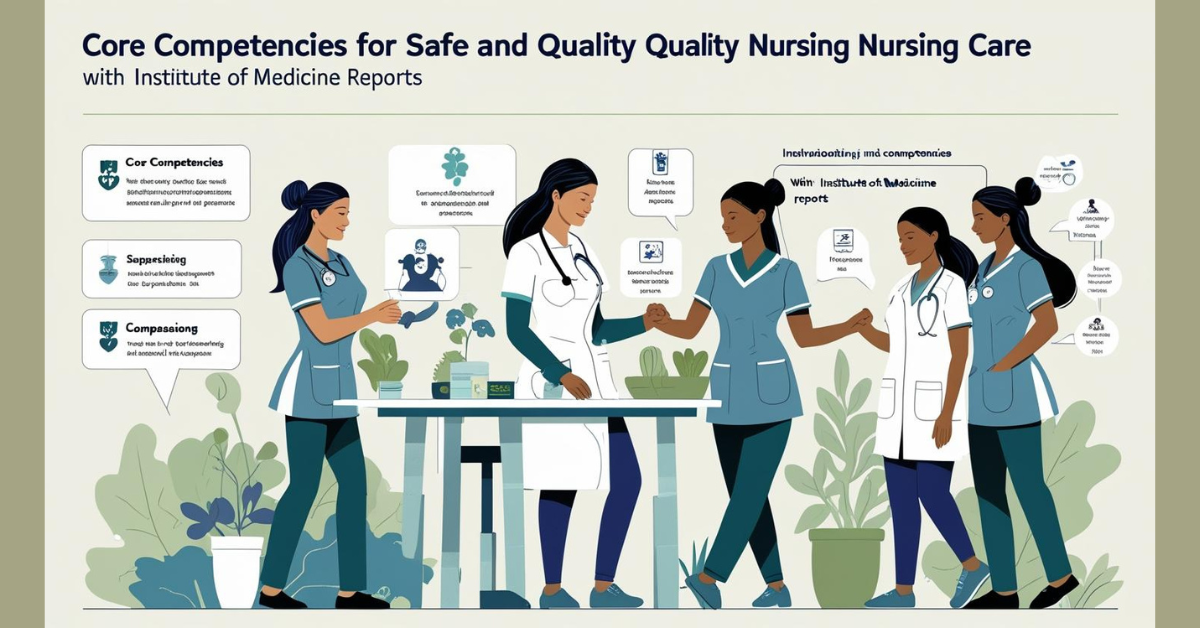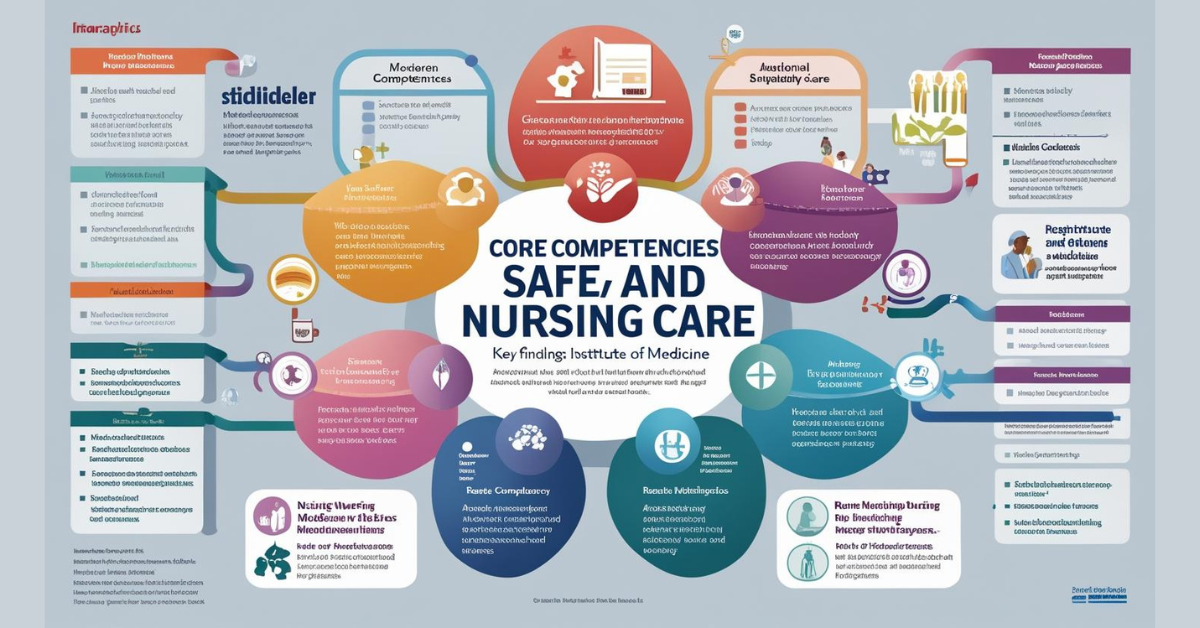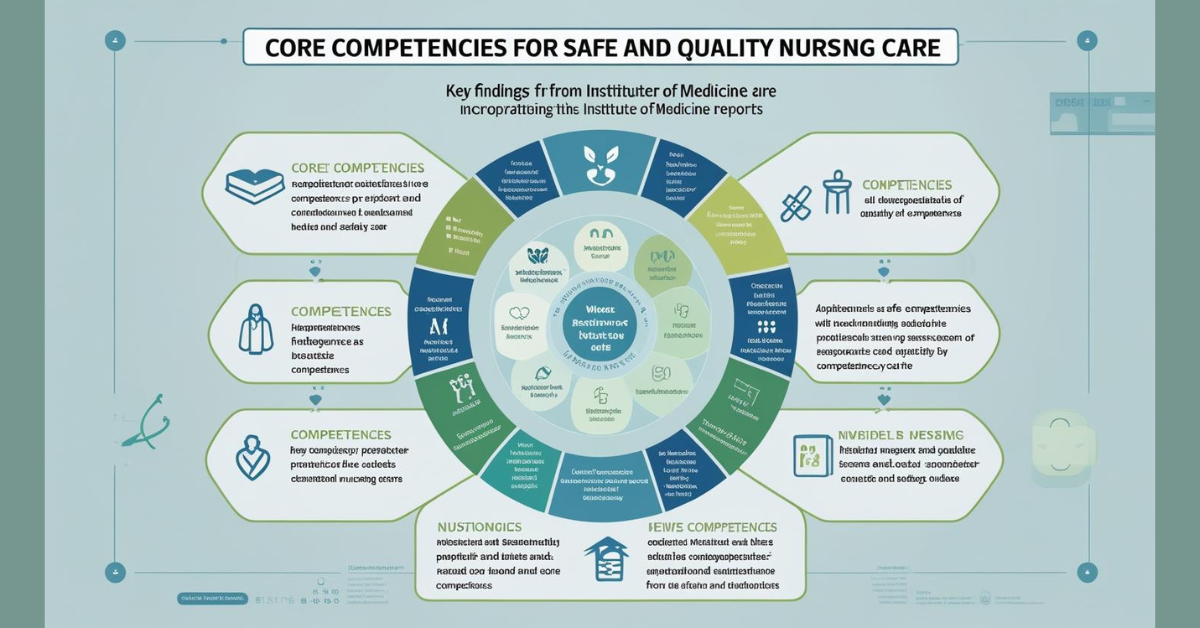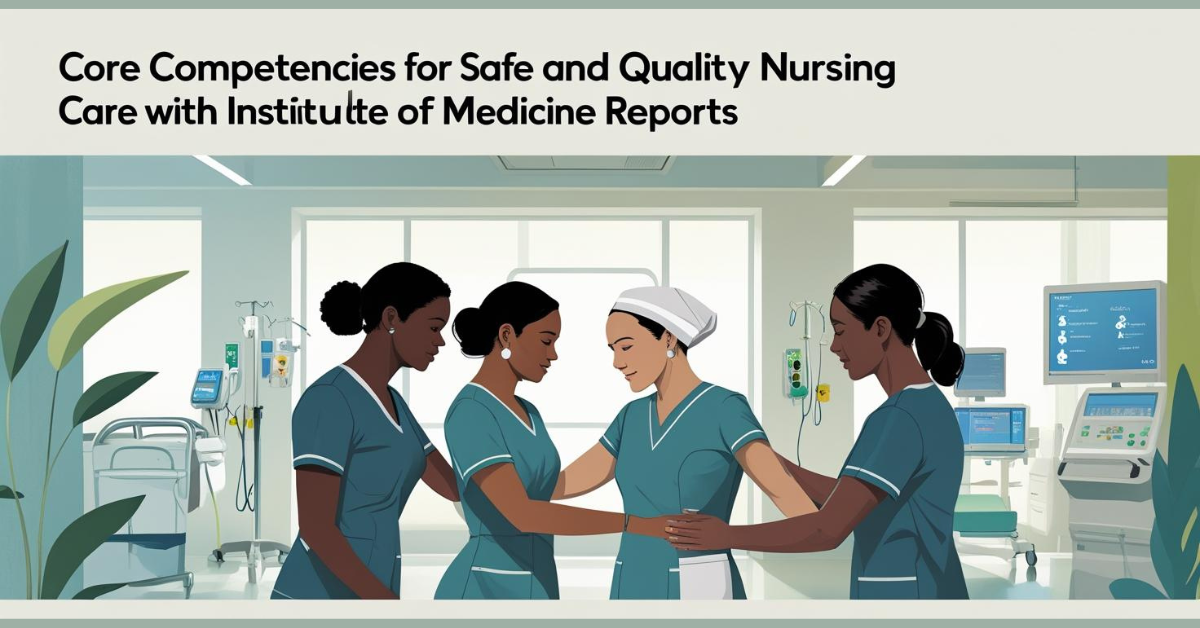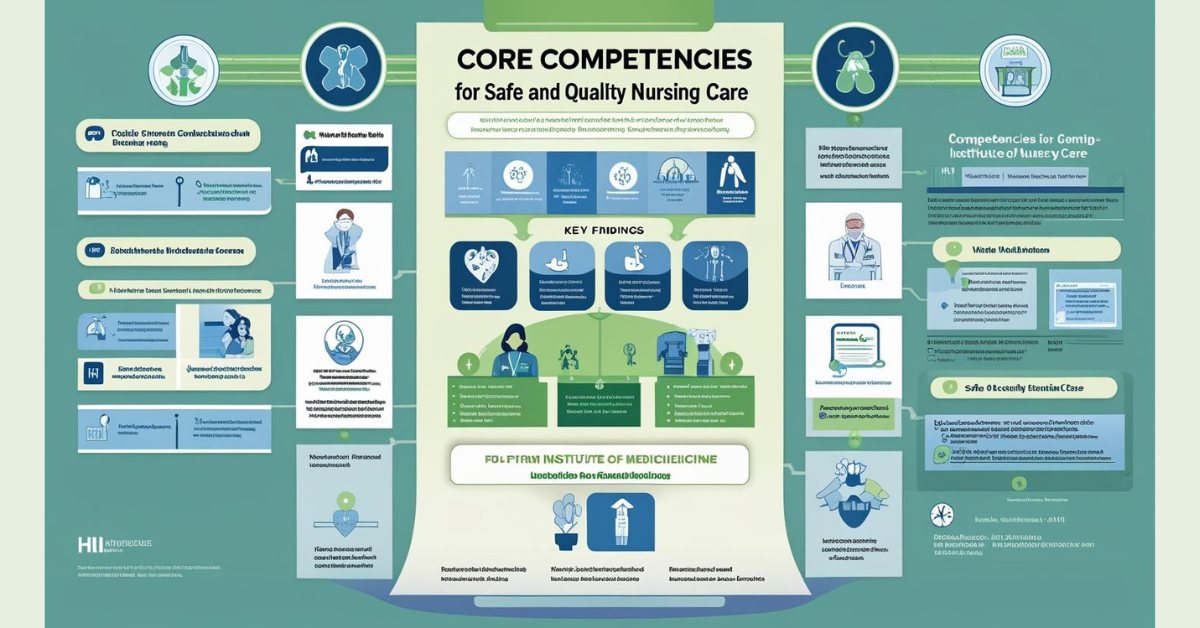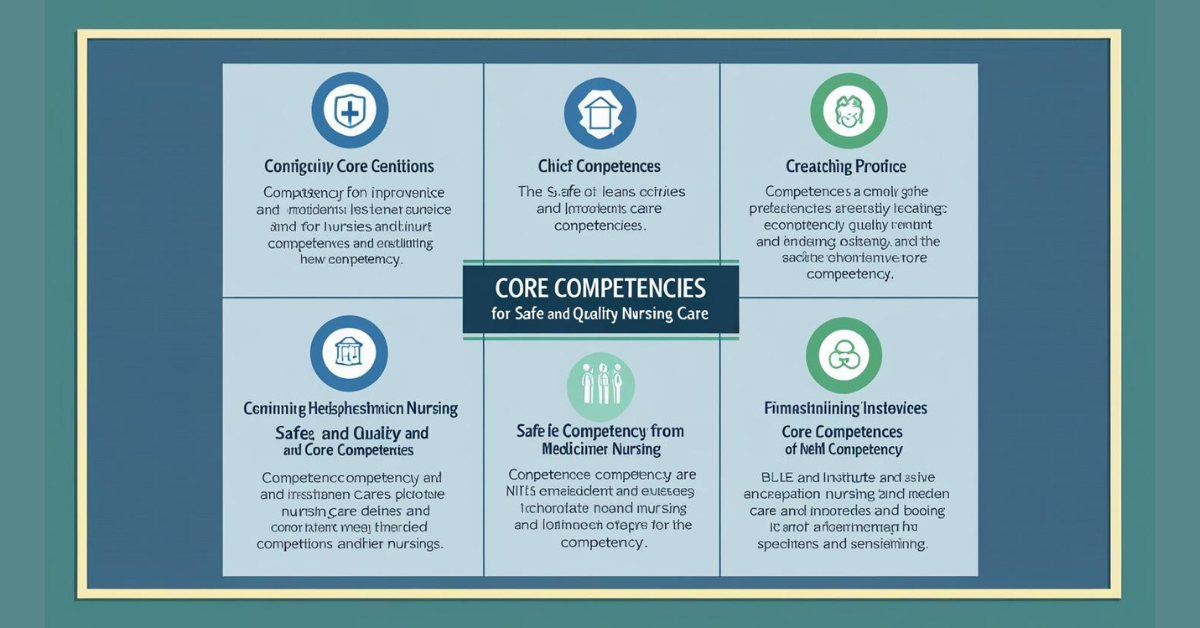The Core Competencies for Safe and Quality Nursing Care with Institute Of Medicine Reports. The core competencies for safe, high-quality nursing, as defined by the Institute of Medicine (IOM) and other organizations such as the Quality and Safety Education for Nurses (QSEN), encompass essential skills and knowledge for nurses to provide effective, patient-centered care.
What are Core Competencies for Safe and Quality Nursing Care
Nurses at all levels are leaders in the patient safety movement. Every nurse must be educated to deliver patient-centered care as a member of an inter-professional team, emphasizing evidence-based practice, quality improvement approaches, informatics, and safety (Cronenwett et al., 2007; Greiner & Knebel, 2003). The modern patient safety movement began in 2000 when the Institute of Medicine (IOM) published its landmark report, To Err Is Human: Building a Safer Health System (Kohn, Corrigan, & Donaldson, 2000).
These competencies focus on five key areas: patient-centered care, teamwork and collaboration, evidence-based practice, quality improvement, and informatics. With that publication, a quest for quality and safety in health care was launched that continues today. In 2003, the IOM published Health Professions Education: A Bridge to Quality (Greiner & Knebel, 2003), which identified five core competencies for all health-care professions.
In response to the IOM report, the Quality and Safety Education for Nurses (QSEN) initiative was launched in 2005 with the primary goal of establishing a set of core competencies specific to the nursing profession. The core competencies for health-care professionals identified by the IOM and adapted by the QSEN faculty for nursing to be integrated into basic nursing education. Because the QSEN core competencies are now being translated into practice, the fundamental elements of each competency are discussed to help nurse leaders and managers operationalize them in their work settings.
In the View of Institute Of Medicine Reports
Established in 1970 as the health arm of the National Academies, the IOM is an independent nonprofit organization that works outside the federal government to provide unbiased and authoritative advice on health and health care to decision makers and the public. The IOM brings together experts and stakeholders to provide the nation with unbiased, evidence-based guidance on health-related issues. Since 2000, the IOM has published a number of reports related to the state of quality in the U.S. health-care system.
The IOM’s first report, To Err Is Human, was groundbreaking in that it identified medical errors as the leading cause of injury and unexpected death in health-care settings in the United States. The purpose of the report was to present a strategy to improve health-care quality over the following 10 years.
Contending that prevent able adverse events result in up to 98,000 deaths annually, the IOM identified three domains of quality: patient safety, practice consistent with current medical knowledge, and meeting customer-specific values and expectations. Additionally, the IOM determined that patient safety is a critical component of quality. The IOM out lined the following four-tiered approach to quality improvement (Kohn, Corrigan, & Donaldson, 2000):
- “Establishing a national focus to create leadership, research, tools, and protocols to enhance the knowledge base about safety” (p. 3)
- “Identifying and learning from errors by developing a nationwide public mandatory reporting system and by encouraging health care organizations and practitioners to develop and participate in voluntary reporting systems” (p. 3)
- “Raising performance standards and expectations for improvements in safety through the actions of oversight organizations, professional groups, and group purchasers of health care” (p. 4)
- “Implementing safety systems in health care organizations to ensure safe practices at the delivery level” (p. 4)
Before the publication of To Err Is Human, in 1997, President Bill Clinton appointed the Advisory Commission on Consumer Protection and Quality in the Health Care Industry to advise him on changes occurring in the health-care system and to make recommendations on how to promote and ensure health-care quality as well as protect consumers and professionals in the health-care system.
In response, the Commission drafted a consumer bill of rights, adopting the following eight areas of consumer rights and responsibilities (Advisory Commission on Consumer Protection and Quality in the Health Care Industry, 1997):
- Information disclosure
- Choice of providers and plans
- Choice of health-care providers that is sufficient to ensure access to appropriate high-quality care
- Access to emergency services
- Participation in treatment decisions
- Respect and nondiscrimination; confidentiality of health information
- Complaints and appeals
- Consumer responsibilities
Endorsing the eight recommendations for consumer rights and responsibilities adopted by the Commission, the IOM (2001) challenged all health-care organizations and professionals to work continually to reduce the burden of illness, injury, and disability of the people of the United States. Although health-care professionals were—and continue to be—dedicated to providing quality care, a gap remained. Asserting that the U.S. health-care system was in need of major restructuring, the IOM called for an overhaul by outlining six aims for health-care improvement in the 21st century in its 2001 report, crossing the Quality Chasm:
A New Health System for the 21st Century: that health care should be safe, effective, patient-centered, timely, efficient, and equitable. The IOM believed that addressing these performance characteristics would lead to narrowing the quality gap. The descriptions of these six aims. In addition to the six aims, the IOM (2001) identified 10 rules to redesign and improve health-care delivery in the 21st century.
Emphasizing that part of the quality gap reflects a lack of support of well-designed systems and the absence of an environment that fosters innovation and excellence, the IOM contended that these 10 specific rules are necessary to achieve significant improvement in quality (IOM, 2001). These rules were implemented to have an impact on the health-care workforce and, in turn, require change in accountabilities, standards of care, and relationships between patients and health-care professionals (IOM, 2001).
Building on the six aims for health-care improvement and the rules for health care in the 21st century, the IOM recognized health professions education as the primary tactic to narrow the quality gap. Thus, its report Health Professions Education: A Bridge to Quality (Greiner & Knebel, 2003) outlined five essential competencies necessary for all future graduates of health professions education programs, regardless of discipline (pp. 45–46):
- Provide patient-centered care.
- Work in interdisciplinary teams.
- Employ evidence-based practice.
- Apply quality improvement.
- Use informatics.
The competencies are interrelated and applied together. However, the IOM stresses that skills related to the competencies are not discipline-specific and that each profession may put them into practice differently (Greiner & Knebel, 2003). In response, the QSEN faculty adapted the IOM competencies for the nursing profession and identified the knowledge, skills, and attitudes for each competency that should be developed in pre licensure nursing education (Cronenwett et al., 2007).
Read More:
https://nurseseducator.com/didactic-and-dialectic-teaching-rationale-for-team-based-learning/
https://nurseseducator.com/high-fidelity-simulation-use-in-nursing-education/
First NCLEX Exam Center In Pakistan From Lahore (Mall of Lahore) to the Global Nursing
Categories of Journals: W, X, Y and Z Category Journal In Nursing Education
AI in Healthcare Content Creation: A Double-Edged Sword and Scary
Social Links:
https://www.facebook.com/nurseseducator/
https://www.instagram.com/nurseseducator/
https://www.pinterest.com/NursesEducator/
https://www.linkedin.com/in/nurseseducator/
https://www.researchgate.net/profile/Afza-Lal-Din
https://scholar.google.com/citations?hl=en&user=F0XY9vQAAAAJ
